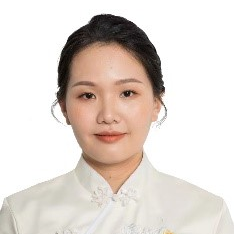Dynamic Polymers
A special issue of Polymers (ISSN 2073-4360). This special issue belongs to the section "Polymer Applications".
Deadline for manuscript submissions: closed (25 November 2022) | Viewed by 14388
Special Issue Editor
Interests: dynamic covalent polymer; bond exchange; plasticity; recycling; reprocessing; topological transformation; shape-shifting; stimuli-responsive polymer; shape memory polymer; liquid crystalline elastomer; ceramic; transparent glass
Special Issue Information
Dear Colleagues,
Dynamic polymers with dynamic covalent or non-covalent bonds have attracted increasing attention for their unique roles in various areas. Among these, chemical recycling, reprocessing, and self-healing have been mostly extended in the past few decades due to sustainable societal development. Beyond that, bond exchangeability of dynamic polymers leads to unparalleled design in polymer composition, topological structure, or physical properties which show important applications in functional materials. With the growing number of dynamic chemistries being studied, various new unignorable problems have emerged, including performance reduction after reprocessing, easiness of creep of self-healing materials, etc.
This Special Issue will cover the wide range of research in the field from the dynamic enabling chemistries, special network designs, new mechanisms, and potential applications. Materials containing dynamic molecules, dynamic oligomers, and dynamic networks are all included. Research works and reviews are both welcome.
Dr. Ning Zheng
Guest Editor
Manuscript Submission Information
Manuscripts should be submitted online at www.mdpi.com by registering and logging in to this website. Once you are registered, click here to go to the submission form. Manuscripts can be submitted until the deadline. All submissions that pass pre-check are peer-reviewed. Accepted papers will be published continuously in the journal (as soon as accepted) and will be listed together on the special issue website. Research articles, review articles as well as short communications are invited. For planned papers, a title and short abstract (about 250 words) can be sent to the Editorial Office for assessment.
Submitted manuscripts should not have been published previously, nor be under consideration for publication elsewhere (except conference proceedings papers). All manuscripts are thoroughly refereed through a single-blind peer-review process. A guide for authors and other relevant information for submission of manuscripts is available on the Instructions for Authors page. Polymers is an international peer-reviewed open access semimonthly journal published by MDPI.
Please visit the Instructions for Authors page before submitting a manuscript. The Article Processing Charge (APC) for publication in this open access journal is 2700 CHF (Swiss Francs). Submitted papers should be well formatted and use good English. Authors may use MDPI's English editing service prior to publication or during author revisions.
Keywords
- dynamic covalent polymer
- supramolecular polymer
- bond exchange
- self-assembling
- self-healing
- recycling
- reprocessing
- topological transformation
- stimuli-responsive polymer
- shape shifting
Benefits of Publishing in a Special Issue
- Ease of navigation: Grouping papers by topic helps scholars navigate broad scope journals more efficiently.
- Greater discoverability: Special Issues support the reach and impact of scientific research. Articles in Special Issues are more discoverable and cited more frequently.
- Expansion of research network: Special Issues facilitate connections among authors, fostering scientific collaborations.
- External promotion: Articles in Special Issues are often promoted through the journal's social media, increasing their visibility.
- Reprint: MDPI Books provides the opportunity to republish successful Special Issues in book format, both online and in print.
Further information on MDPI's Special Issue policies can be found here.






